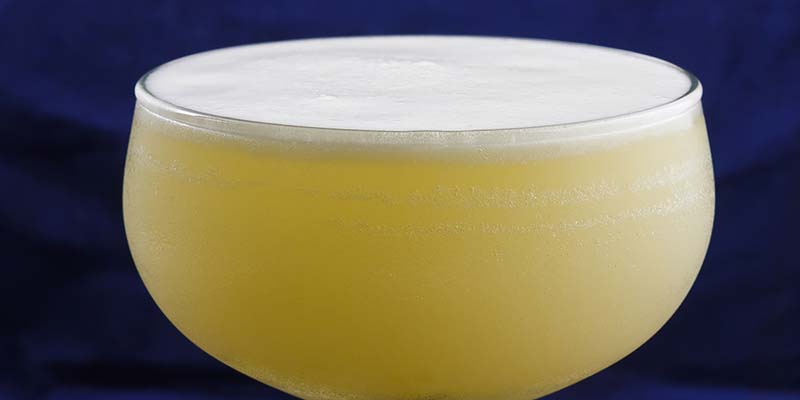It’s not easy to achieve richness in a cocktail without piling on the calories. Most “rich” drinks tend to include stuff like coconut cream — if you like walks in the rain — or half and half, which explains why The Dude tended to opt for a loose-fitting bathrobe over well-tailored pants.
But there’s one way to impart richness to a drink that you either may not know about, or be too grossed out by: the humble egg white. Before you go grab a bottle of hand sanitizer and rock back and forth in a corner, just bear in mind: if you’ve had a pisco sour or boozy eggnog, you’ve (successfully) consumed an egg white cocktail and lived to tell the tale.
As long as the eggs are fresh — if you can do farmer’s market, all the better — and as long as your hands are washed and the eggs are washed, you should be safe from salmonella. (In fact, “you’re more likely — about four times more likely — to choke on a handful of bar nuts than you are to get salmonella poisoning, according to statistics from the National Safety Council.”) Not that we’re recommending you use egg whites if you’re still worried. No matter how good the cocktail, fear always tastes icky.
Don't Miss A Drop
Get the latest in beer, wine, and cocktail culture sent straight to your inbox.But if you’re up for it, let’s dive into the egg white cocktail. First of all, when did we start looking at eggs and thinking, “Yeah, I’d like to get drunk on that.” The history of egg whites in cocktails is longer than you’d think. The English were toasting “Wassail!” with a 17th-century punch called lambswool, which contained “warm ale or mulled wine, sugar, nutmeg, eggs, toasts, and ‘crabs’” (crab apples, not the other kind of crabs). There’s a chance eggs were used in cocktails because they both increased richness of texture (we’ll get to that) and because they imparted some much-needed nutrition. Drinking back in the day wasn’t shots and diet Red Bull.
Fast-forward to a classic egg white cocktail like the Whiskey Sour, which first appeared in Jerry Thomas’s Bartender’s Guide in 1862 and was basically egg white, simple syrup, lemon juice, and whiskey. (Notice this contains nothing of the sour mix most whiskey sours are adulterated with these days.) And then there’s the Pisco Sour, which was (probably?) invented in the early 20th Century. See? No reason to be afraid. Egg whites have been mingling with booze for centuries.
Now onto the why. Egg whites—the albumen part of the egg—won’t impart any noticeable “eggy” flavor to a drink. That’s why a pisco sour doesn’t taste like tart custard. What it will do is enrich the texture of the drink. It’s the same reason we’re able to make meringues. When you shake all the ingredients in an egg white drink, you’re loosening the egg’s tight proteins and incorporating tiny air bubbles into those proteins to create a foam. Ideally, some of that foaminess is subtly integrated into the body of the drink, but you’ll also find a nice cap of foam on top.
If you plan on shaking up an egg white cocktail at home, there are a couple tips. Number one, again, make sure that egg is fresh and both your hands and the egg shell are clean. Number two, you can either “dry shake” or “reverse dry shake.” The dry shake is pretty simple: put all the ingredients except for ice into your shaker, cover tightly, and shake like a madman to incorporate the egg white and whip it into a nice froth. Then add ice for a second round of shaking to properly chill the drink. The “reverse dry shake” is similar, but provides for less dilution. You put all your ingredients, including ice but excluding the egg white, into your shaker and give it a classically vigorous cocktail shake. Then strain out the ice and add the egg white into the shaker, shaking ridiculously vigorously to incorporate. Pour your eggy cocktail into a cocktail glass and observe the tightly knit, smoothy, eggy foam in all its protein-packed glory.

